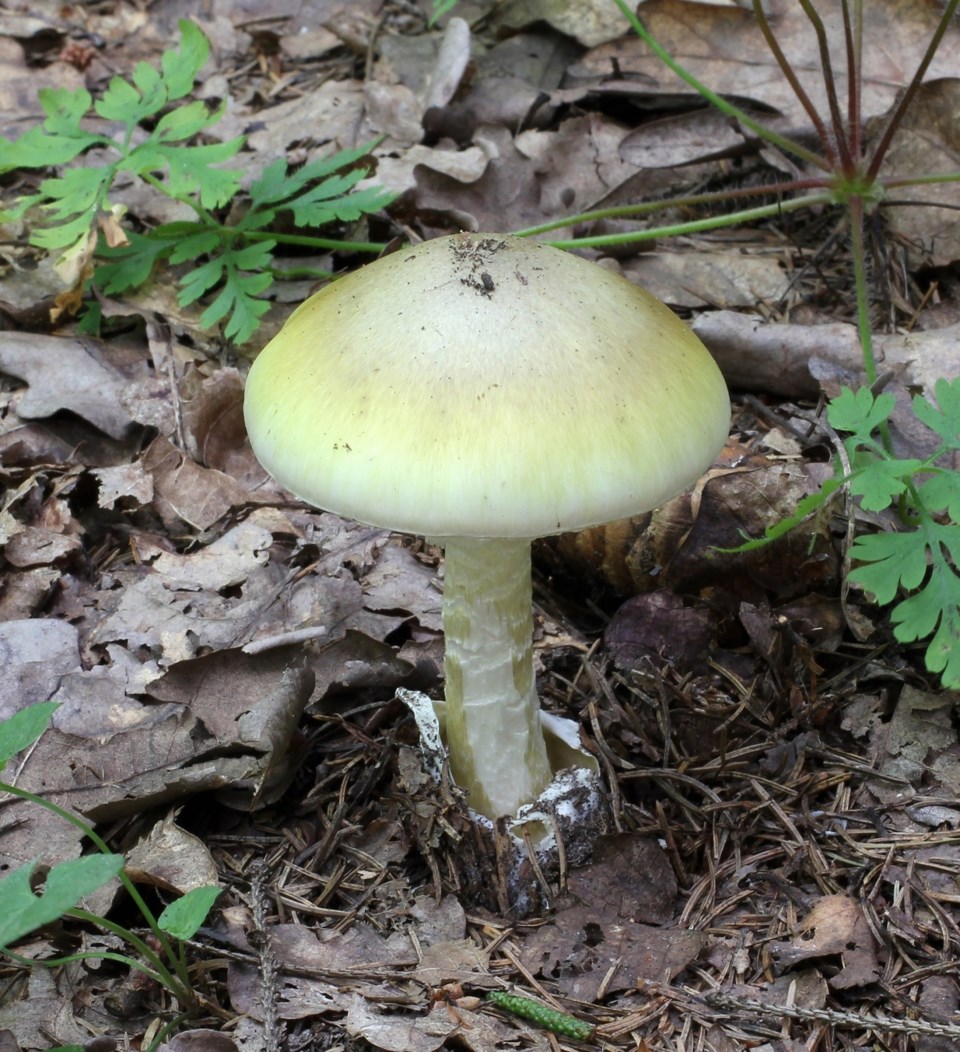VANCOUVER — The BC Centre for Disease Control is advising mushroom lovers not to forage in urban areas of Vancouver, the Fraser Valley and Vancouver Island because they could unwittingly reap a deadly harvest.
It has issued an advisory saying death cap mushrooms are the deadliest on the planet and have been identified in 100 locations in the Vancouver area.
B.C. Drug and Poison Control Centre pharmacist Raymond Li says the centre handled 30 mushroom exposure calls between June and August, but saw 16 in September alone as wet weather helped all types of mushrooms, including death caps, to flourish.
The proliferation has prompted the creation of a poster and brochure about the death cap, in part because it is easily mistaken for other edible mushrooms and also because it is found almost exclusively in urban areas of the south coast.
The death cap is not native to B.C., but was brought in on the roots of trees such as hornbeam, European beech, English and red oak, hazelnut, linden and sweet chestnut, which now line streets in Vancouver, the Fraser Valley and parts of the island.
The centre for disease control says people should report confirmed or suspected death cap mushrooms to a local mycological club or online to B.C.'s Invasive Species Working Group because it's not known how far the mushrooms have spread.
Paul Kroeger, past president of the Vancouver Mycological Society, says death caps weren't identified until long after they became established.
“There was no way of knowing (they were) there when we brought the trees here," he says in the news release.
"It was not until the trees matured, about 50 years later, that the mushrooms began to appear."
Death caps are blamed for the death of a Vancouver Island toddler, who ate one in 2016.
Experts say full-grown death caps are often mistaken for paddy straw mushrooms, while immature death caps can look like edible puffballs, but the fairly limited range of the mushroom makes the species easier to avoid.
"I generally caution against foraging in urban environments because of the added risk," Kroeger says. "If you're foraging, go to a natural forest and go with an expert. There are lots of mushroom clubs, events, and festivals."
Anyone worried about children or pets who may have taken a bite out of a suspicious mushroom are advised to take the whole mushroom, or pictures of it, so it can be identified or at least ruled out as a potentially dangerous fungus.
Death cap toxins damage the liver and kidney with symptoms such as cramping, abdominal pain, vomiting, diarrhea and dehydration usually occurring within six to 12 hours after consumption, the centre for disease control says in the news release.
Those symptoms can fade before returning more severely within 72 hours, leading to severe illness and organ failure that requires medical treatment and, possibly, organ transplants to prevent death.
— The Canadian Press



